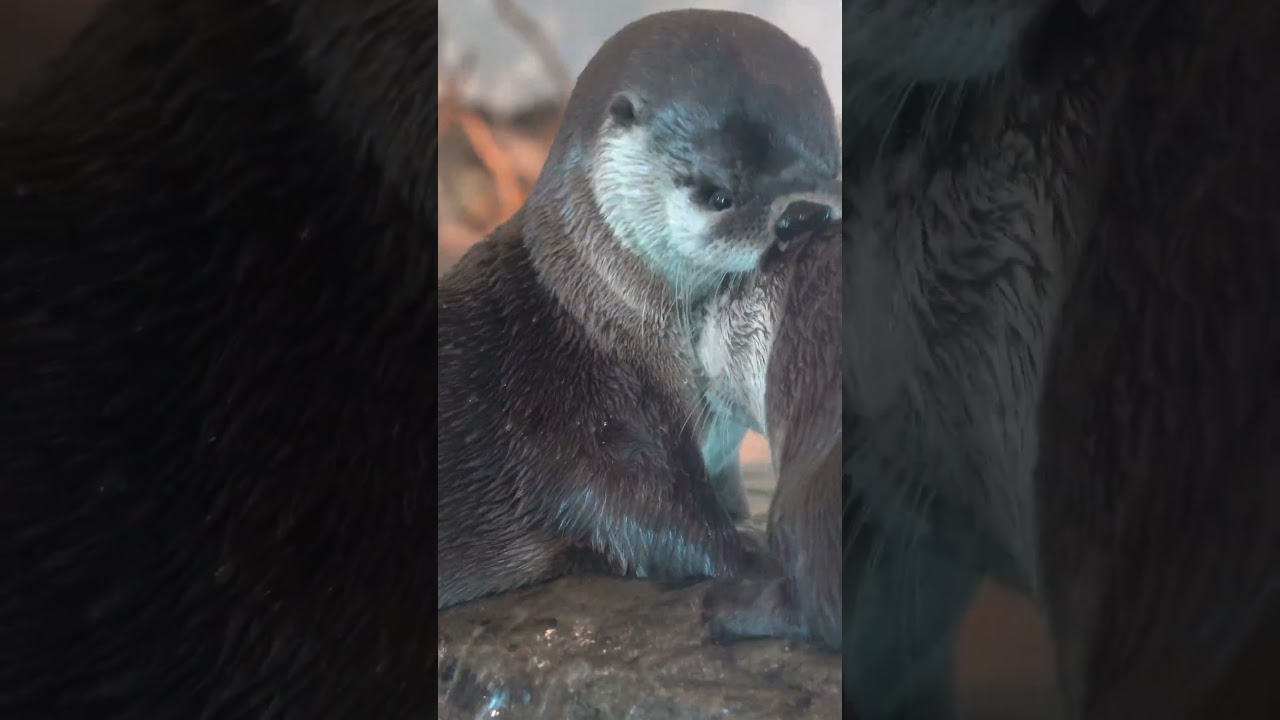– Behavioral patterns and social interactions among otters, focusing on the significance of grooming and scratching behaviors.
– The role of environmental enrichment in zoo management and its effects on otter welfare.
– Conservation efforts for otter populations worldwide, highlighting the challenges and successes.
With their playful demeanor and undeniable charisma, Otters have captivated the hearts of many. A particular instance that draws significant attention is the interaction between Ryer and Baxter; two otters were observed giving each other scratches. This seemingly simple and affectionate behavior opens a window into the complex social structures and habits of otters, offering insights into their natural behaviors and the importance of replicating these in zoo environments for their psychological and physical well-being.
Behavioral Patterns and Social Interactions Among Otters
Observing Ryer and Baxter giving scratches to each other is a fascinating insight into otter behavior. Otters are known for their high level of social interaction, including grooming, play fighting, and mutual assistance in tasks like foraging and nest building. These activities are crucial for maintaining physical health by removing parasites and ensuring fur is in good condition. They also play a significant role in strengthening social bonds and establishing group hierarchies.
In the wild, otters are highly adaptive creatures with behaviors that vary significantly across species and habitats. For instance, while some otters are solitary, others live in familial groups or pair bonds, exhibiting a range of social structures. The act of grooming or scratching between Ryer and Baxter is a valuable example of the affectionate interactions within these social groups. This behavior aids in stress relief and reinforces social cohesion, which is essential for otter communities’ cooperative nature.
The Role of Environmental Enrichment in Zoo Management
Replicating otters’ natural behaviors and habitat in captivity is crucial for their overall health and happiness. This is where environmental enrichment comes into play, a strategy used in zoo management that involves providing animals with stimulating environments, activities, and objects that encourage natural behaviors. For otters like Ryer and Baxter, enrichment can include complex water systems to simulate river environments, objects to manipulate and play with, and opportunities for social interaction.
Environmental enrichment has profound effects on otter welfare. It enhances cognitive functioning, reduces abnormal behaviors often seen in captivity, like pacing or over-grooming, and increases overall activity levels. For Ryer and Baxter, giving scratches fulfills a natural grooming behavior, provides sensory enrichment and fosters their social relationship, which is vital in an enclosed setting.
Conservation Efforts for Otter Populations Worldwide
Beyond the zoo environment, otters face numerous threats in the wild, from habitat destruction and water pollution to direct human conflict. Conservation efforts are vital to ensure the survival of otter populations globally. These efforts include habitat restoration, protection laws, anti-poaching measures, and pollution control.
Conservation programs often involve research and monitoring to understand better otter populations’ dynamics, threats, and behaviors – such as the scratching and grooming observed in Ryer and Baxter. These insights help shape effective conservation strategies that account for otter social structures and habitats, aiming to replicate the conditions under which otters thrive in the wild.
By conserving otter habitats and ensuring healthy populations in the wild, we also preserve the intricate web of ecosystems that otters are part of. Otters play a crucial role in their environments as predators that help control fish and invertebrate populations, contributing to aquatic ecosystems’ overall health and balance.
Otters like Ryer and Baxter offer more than moments of adoration; they serve as ambassadors for their wild counterparts, reminding us of the importance of understanding and conserving the natural world. Their behavior sheds light on the complex social structures and emotional needs of these fascinating creatures, highlighting the significance of environmental enrichment in captivity and the need for concerted conservation efforts to protect otters across the globe.
Through attentive zoo management that prioritizes the replication of natural behaviors and habitats and global efforts to conserve otter populations, we can help ensure that otters continue to thrive in captivity and the wild. The playful scratches between Ryer and Baxter are but a glimpse into the rich social lives of otters, a reminder of the depth of care required to safeguard these engaging and vital members of aquatic ecosystems.
*****
Source Description
🔖Get your tickets to the Aquarium of the Bay at https://www.aquariumofthebay.org/tickets/
Use code “YOUTUBE5” at checkout for $5 off your tickets at online checkout!
🐟About Us
Discover the beauty and diversity of Northern California aquatic life at Aquarium of the Bay. Located on the historic San Francisco waterfront at PIER 39, the Aquarium is home to over 20,000 marine animals, including sleek sharks and rays, secretive octopuses, hypnotic jellyfish, sparkling anchovies, frolicking river otters, and many more.
📲Our Social Media Platforms
https://www.instagram.com/aquariumofthebay/
https://www.facebook.com/AquariumOfTheBay/
Tweets by AqofthebaySF
https://www.threads.net/@aquariumofthebay
🛒Support The Aquarium’s Mission for Environmental Conservation!
https://bayecotarium.org/ecostore/
✉️Contact Us
info@bayecotarium.org
415-623-5300
📍Location
PIER 39 Embarcadero & Beach St.
San Francisco, CA 94133

